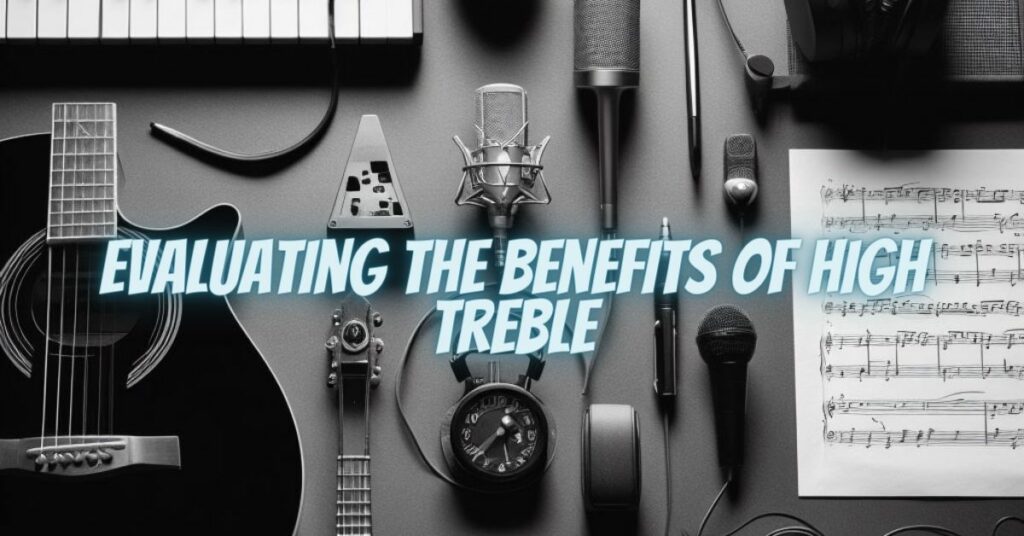When it comes to audio, the balance between different frequency ranges plays a vital role in shaping the sound. Treble frequencies, often associated with brightness and clarity, are a crucial component of this balance. In this article, we will explore the concept of treble frequencies, their role in audio, and whether high treble is always a good thing.
Understanding Treble Frequencies
Treble, also referred to as high-frequency or high-end, encompasses the upper range of audible frequencies in the sound spectrum. Treble frequencies generally start around 2 kHz and extend to approximately 20 kHz, though this range can vary depending on factors such as age and individual hearing capabilities. These frequencies are responsible for the perception of clarity, detail, and brightness in audio.
The Role of Treble in Audio
Treble frequencies serve several important functions in audio:
- Clarity and Detail: Treble frequencies contribute to the clarity and definition of sound. They help differentiate between instruments and enhance the perception of fine details in music and speech.
- Articulation: Treble frequencies are essential for articulation in vocal recordings and instrument timbres. They add sharpness and definition to consonants and high-pitched sounds.
- Presence: High treble can provide a sense of presence and immediacy, making the sound feel more alive and engaging.
- Balance: Treble frequencies help balance the overall audio spectrum. They counteract the dominance of bass frequencies, ensuring a well-rounded, full sound.
Is High Treble Always Good?
While treble frequencies play a vital role in audio quality, it’s important to recognize that “high treble” is not universally good. The optimal balance of treble in audio varies depending on factors like the source material, the listening environment, and personal preferences. Here are a few considerations regarding high treble:
- Listener Preferences: What sounds like “high treble” to one person may be perceived as too bright or harsh by another. Listener preferences differ, and what may sound good to one individual may not be suitable for someone else.
- Recording Quality: High treble can be beneficial in enhancing the clarity of a well-recorded track. However, in lower-quality recordings, it can accentuate imperfections and unwanted artifacts, making the audio sound harsh or sibilant.
- Listening Environment: The acoustics of your listening environment can impact how treble frequencies are perceived. A room with poor sound treatment may result in excessive reflections and exacerbate the perception of high treble.
- Equipment and Playback System: The quality of your audio equipment, including speakers or headphones, can affect how treble is reproduced. High-quality equipment may provide a more balanced and refined treble representation.
- Music Genre: The ideal balance of treble can vary depending on the music genre. Classical music and jazz may benefit from more pronounced treble, while some electronic or rock genres might require a different balance.
Balancing Treble for Optimal Listening
To achieve an optimal listening experience, it’s essential to balance treble frequencies in audio. This can be achieved through:
- Equalization (EQ): Adjust treble frequencies using an EQ to match your preferences or compensate for the listening environment.
- High-Quality Equipment: Invest in high-quality audio equipment to ensure an accurate and well-balanced reproduction of treble frequencies.
- Room Acoustics: Address room acoustics with proper treatment and setup to reduce unwanted reflections and improve treble balance.
- Individual Adjustment: Recognize that individual preferences vary. Adjust treble settings to your liking while respecting the artist’s original intent.
Treble frequencies are an integral part of audio, contributing to clarity, articulation, and overall balance. While high treble can be beneficial in certain contexts, it’s not a one-size-fits-all approach, as the optimal balance of treble varies based on numerous factors. The key to a satisfying listening experience is achieving a balance that suits your preferences and the specific characteristics of the audio material you’re enjoying.


